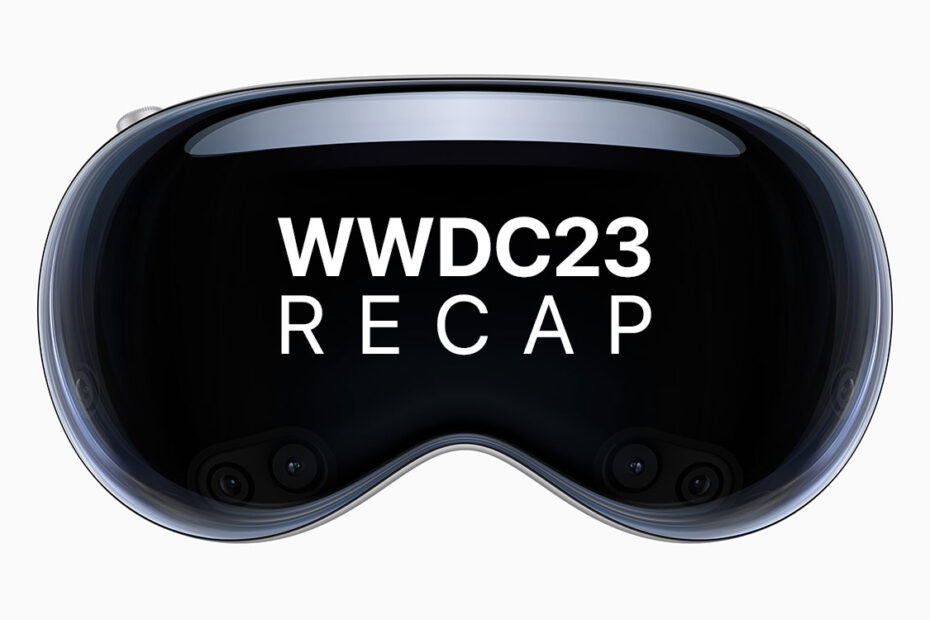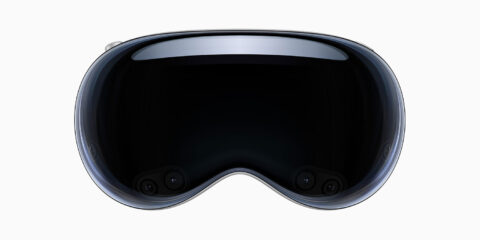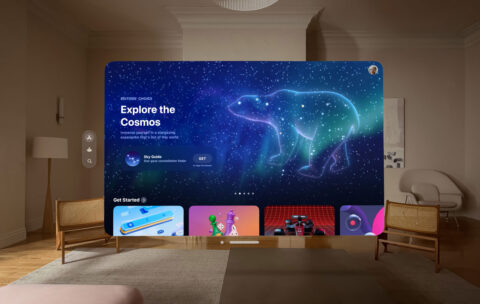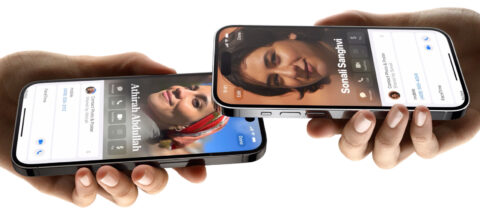All the big news from WWDC’s craziest opening presentation
Wow. Apple’s annual developer keynote just came to a close, and it was the longest and most action-packed presentation in recent history.
Yes, there were previews of iOS 17, plus new features for all Apple’s other platforms. Yes, there were some awesomely powerful new Macs revealed. But we all know what you’re here for: Apple’s show-stealing, brain-melting, eye-watering, mixed-reality headset.
If you missed the two-hours-plus presentation, we’ve got you covered. Below is everything you need to know (for now) about the fancy new headset, plus five key points from the rest of the keynote you won’t want to miss. There’s a lot to discuss, but everything else we’ll wrap up in its own post over the course of the week. Let’s go!
Apple Vision Pro
After years of rumors that Apple would enter the augmented reality headset game, it’s finally here: Apple Vision Pro. This immersive wearable isn’t just a new product, it’s potentially the beginning of a whole new platform. Apple describes it as “spatial computing,” the act of looking through your device to the world around you, placing and interacting with familiar apps floating in three-dimensional space. It’s like ARKit on very expensive steroids.
Vision Pro, at least in the promo footage, looks remarkable. Apple has packed a sleek laminated glass-and-aluminum frame with some incredible display technology, a metric ton of advanced sensors, and more power than the iMac I’m currently writing this on. That translates to high-definition video that wraps around your vision, immersive spatial audio, and incredibly precise eye, hand, and voice tracking that allows users to navigate apps and experiences without a physical controller.
Apps and games are deposited amongst your real surroundings, essentially as a series of floating interactive windows. They have depth, they cast shadows, and Apple says everything is crisp and lag-free to avoid the motion sickness associated with VR headsets. Imagine turning your tiny living room into a huge 4K cinema experience with surround sound, or chilling out to meditative soundscapes from a virtual mountaintop.
Optic ID provides security with advanced retina scanning, while Vision Pro notices when other people enter your field of vision and plasters your eyes onto a curved front display so you can hold a conversation. It’s a little creepy, but hey – better than being obnoxiously hidden and oblivious. Similarly creepy are the digital avatars Apple creates for video calls, which attempt to hide the fact that you’re sitting there with a mask on and no camera pointing at you. I guess that’s the price of progress.
There’s a lot more that we’ll get into once Apple’s hands-on developer demo sessions conclude, but for now suffice it to say this is a huge, huge announcement. Vision Pro won’t hit the markets until early next year, and its cost – a whopping $3499 for the base model – will make it way too expensive for most people. (Luckily, Apple promises demo units at Apple Stores ahead of launch.) But this is a fledgling technology, and if it picks up we can expect to see the platform grow and cheaper models surface in the years to come. We’ll be watching.
Five more key points
Vision Pro may have stolen the show, but Apple announced nearly 90 minutes of other stuff that’s in danger of being missed. Here are the biggest takeaways.
iOS 17 will focus on communication and ‘new experiences’
There’s a lot to dissect in iOS 17, including the fact that the “Hey Siri” wake phrase is replaced simply by “Siri.”
Here are some more of our favorite bits from the keynote: personalized contact posters that show up full-screen when somebody calls you; live transcriptions of voicemails and audio messages; the ability to create animated stickers straight from your camera roll; a new NameDrop feature for instantly sharing contact info; a ‘standby’ mode that turns your iPhone into a glorified nightstand or desk clock; and, at long last, the ability to save offline maps in Apple Maps.
Loads more to dissect as we start testing iOS 17, and a public beta will be available for trial next month.
The entire Mac family now runs on Apple Silicon
It’s taken a few years, but Apple has finally transitioned every type of Mac on its books to its impressive M1 and M2 processing chips. That’s thanks to a long-awaited upgrade to Mac Pro, a high-end computer that offers the PCI expansion capabilities some industry pros rely on for advanced uses.
Meanwhile, there’s a beefy upgrade to last year’s Mac Studio – which can now process 22 streams of 8K ProRes video at once, in real-time – and a tasty-looking 15-inch MacBook Air that puts competing laptops to shame.
All three can be ordered now and ship next week.
macOS Sonoma aims to please gamers
The latest macOS – named Sonoma after the Californian wine region – seems to be tailored for gaming.
Legendary game designer Hideo Kojima announced that Death Stranding is coming to Mac, just days after No Man’s Sky for Mac was revealed on Twitter.
More importantly, a new toolkit makes it easier for developers to port existing games to macOS, meaning we could be seeing an influx of popular games hit the Mac App Store before long.
Watching and listening just got better
A new feature for AirPods will combine the best of Transparency and Noise Cancelation modes. Adaptive Audio dynamically switches up settings so you can stay present in conversations even while distracting noises are reduced.
Apple also announced smart suggestions for AirPlay, SharePlay sessions for the car, and even a way to sync with a hotel TV to AirPlay your favorite streaming apps.
Apple wants to improve your mental health
iOS 17 brings a new Journal app to help users preserve memories and practice gratitude, complete with reflection prompts and personalized suggestions akin to those in Photo Memories.
There’s also a Mindfulness app to log your daily feelings and screening tools to assess the risk of depression.
Phew! Take that all in, reflect on whether it’s worth $3499 to FaceTime a friend via the uncanny valley, and stay tuned for more WWDC recaps and breaking news throughout the week.






